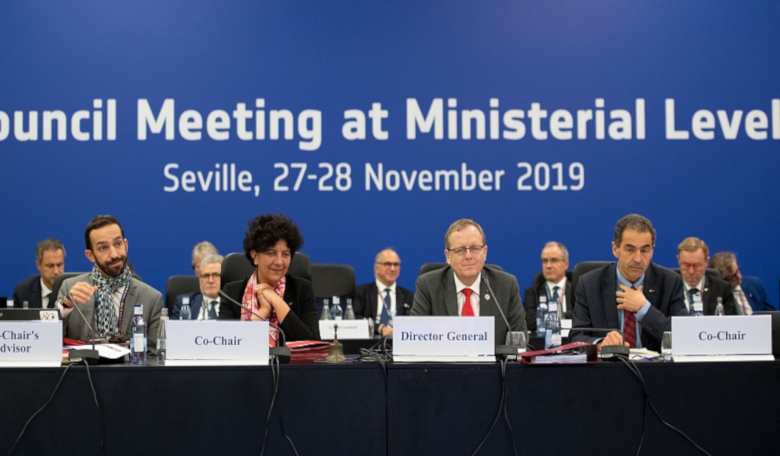At a two-day ministerial meeting held in Seville, Spain this week, the European Space Agency’s member states approved the most ambitious plan to date by agreeing to provide nearly 12.5 billion euros ($13.8 billion) for the next three years to boost the future of ESA and the whole European space sector. This is the agency’s biggest increase in funds in the last 25 years.
The funding, which means ESA will get 14.5 billion over five years – signals the way forward for the agency to now confidently proceed with a number of projects such as the Athena X-ray telescope, the Lisa space-based gravitational wave observatory, and the Clearspace active removal mission.
ESA’s ambitious mission that will be humankind’s first probe to rendezvous with a binary asteroid system, Hera, was also given approval at the meeting.
“You have a happy DG in front of you,” ESA Director General Jan Woerner said at a press conference at the end of the meeting.
Due to launch in 2024, Hera is the European contribution to an international double-spacecraft collaboration.
After travelling to the Didymos pair of near-Earth asteroids two years ahead of Hera, ESA’s partner NASA, will first perform a kinetic impact on the smaller of the two bodies, a 160 metre moon informally called ‘Didymoon’, as part of its Double Asteroid Redirect Test (DART) mission.
The impact is expected to perturb Didymoon’s orbit around the main body and when that happens, Hera will be on-hand to follow-up with a detailed post-impact survey of the Pyramid-sized moon to see if the experience can be used as a planetary defence technique.
ESA Ministers also secured a smooth transition to the next generation of launchers: Ariane 6 and Vega-C, and have given the green light to Space Rider, ESA’s new reusable spaceship, which will mostly be funded by party member Italy.
Space Rider aims to provide Europe with an independent, affordable and reusable end-to-end integrated space transportation system for routine access to and from low Earth orbit.
When broken down by country, the biggest contributors to the ESA budget are Germany (22.9 percent), France (18.5 percent), Italy (15.9 percent), UK (11.5 percent), Spain (5.9 percent), and Belgium (5.7 percent).
ESA Director of Exploration, David Parker, said that approximately 25 percent of the exploration budget will be spent on lunar activities, including subscription for the iHAB and ESPRIT modules for the Lunar Gateway, lunar robotic missions, and the European service module for NASA’s Orion spacecraft.
Another big winner of the meeting was ESA’s Copernicus programme; the most ambitious Earth observation programme to date. With an injection of funds, ESA can now move ahead with the early phase development of the six Sentinel satellite systems that would complement the existing arrangement. At present, three complete two-satellite constellations are in orbit plus an additional single satellite, Sentinel-5P.
Some projects hoping for a cash boost were not so lucky. ESA’s Lagrange space weather mission that would provide timely and accurate space weather information has been limited to instrument activity only for the moment said Director General Jan Woerner.
The meeting also saw Luxembourg and ESA strengthen ties when the country’s Deputy Prime Minister Etienne Schneider and agency Director General Jan Wörner sign a Memorandum of Cooperation to further commit to establishing cooperation in the field of space resources and innovation.
ESA and the Luxembourg Space Agency have already been working together to explore opportunities for cooperation, following the establishment of Luxembourg’s SpaceResources.lu initiative in 2016.
The Memorandum will now see ESA join the Space Resources Innovation Centre as a strategic partner, broadening the scope of the activities started under the initiative.











